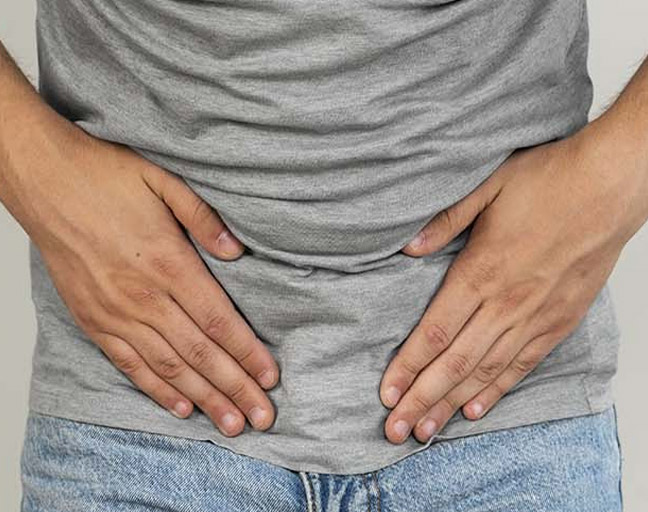Finding a lump between the anus and scrotum can definitely cause concern. It might feel a little embarrassing to talk about, but it’s important to get it checked out to make sure everything’s okay. In most cases, it could just be a harmless symptom of something happening in the lower pelvic area. But only your doctor can tell you for sure.
Lumps in this area can be caused by several things—such as a cyst, injury, or skin abscess—and while they might be common, they can affect anyone. Let’s dive into some of the more common causes of lumps in this region and what you should do if you notice one.
Causes of Lumps Between Anus and Scrotum
Lumps in this area can result from various conditions. Some may require treatment, while others might not be a big deal. The most important thing is to see a doctor for a proper diagnosis. Let’s take a look at some of the causes.
1. Dermoid Cysts
A dermoid cyst is a rare type of cyst, mostly harmless but sometimes can turn cancerous. They typically develop on the testicles but can also appear in the area between the anus and scrotum.
These cysts form during fetal development and often contain things like hair, nails, teeth, and nerves. They usually don’t cause any symptoms unless they grow large enough to create problems.
Symptoms:
- A lump that you can feel near the testicles or perineum
- Difficulty urinating
- A dull lower backache
- Pain that radiates to the thighs
Treatment:
- Doctors will biopsy the cyst to check if it’s benign or cancerous. If it’s benign, only the cyst will be removed. If it’s cancerous, the cyst and affected testicle(s) may need to be removed.
2. Lipoma
Lipomas are just fatty tumors and are almost always non-cancerous. While not common in the perineal area, they can form anywhere on the body.
Symptoms:
- A soft, noticeable lump
- No pain or discomfort when small
- As they grow, they might cause discomfort, especially when wearing tight clothes
Treatment:
- If small, lipomas don’t need treatment. Your doctor might perform a small biopsy for confirmation. If the lipoma becomes large and bothersome, it can easily be removed through a minor outpatient surgery.
3. Anal Duct Cyst
Anal glands have ducts that release pheromones, which help mammals identify each other. In humans, these glands are smaller, but they still have openings that can become blocked with oils, fecal matter, or other substances, leading to cyst formation. These cysts can sometimes turn into infected abscesses.
Symptoms:
- A lump near the anus or scrotum
- Pain in the perineal area
- Drainage or discharge
- Pelvic and lower abdominal pain
- Pain during bowel movements
- Fever, fatigue, and swelling
Treatment:
- If you have these symptoms, it’s best to see your doctor immediately. Anal duct cysts need to be surgically drained, and you may need antibiotics or pain relief. Until you can see your doctor, applying a warm compress to the area can help reduce swelling and pain.
4. Sacrococcygeal Teratoma
A sacrococcygeal teratoma is a tumor that forms during fetal development and can appear as a lump at the very end of the tailbone, sometimes near the perineum. Most of the time, these tumors are benign, but in rare cases, they can become malignant.
Symptoms:
- Pain when sitting
- Pressure on the bottom area
- Constipation
- A visible lump near the tailbone or perineum
Treatment:
- Surgery is required to remove the tumor, which may involve repairing the muscles attached to the perineum. If the tumor is large, the surgeon might need to approach it from both the perineum and abdomen.
5. Sebaceous Cyst
Sebaceous cysts occur when skin cells get trapped inside a hair follicle, preventing them from shedding. This leads to swelling as oils and skin cells build up. In the perineal area, where there are many hair follicles, clothing or friction can obstruct these glands and lead to cyst formation.
Symptoms:
- A painless lump under the skin
- Thick yellow fluid drainage
- Black material (blackhead) at the cyst’s head
- Red, painful, and inflamed if infected
Treatment:
- Applying a warm compress might help open the cyst and drain it. Don’t squeeze or pick at it, as this can lead to infection. If the cyst persists, see your doctor for a possible drainage procedure. Also, wearing loose cotton underwear and keeping the area clean and dry can help prevent further irritation.
6. Perineal Injury
Injuries to the perineal area can result in a lump or swelling. These types of injuries are common in people who ride bikes, those with chronic constipation, men who work in construction, or those who have had pelvic or perineal surgeries.
Symptoms:
- Painful erections
- Bruising in the perineal area
- Pain when touching the area
- Bleeding if there’s a tear
Treatment:
- Immediate attention is needed to repair any tears with stitches. If it’s just a bruise or lump, ice and rest are usually recommended in the first few days. Antibiotics may be prescribed if an infection develops, and your doctor may offer medication for painful erections.
When to See a Doctor
Any lump or swelling near the scrotum, testicles, or anus should be checked by a doctor as soon as possible. Even if the lump isn’t painful, it could still be something serious, like a cancerous growth. If the lump is benign and goes away on its own, you’ll likely have nothing to worry about. However, if it keeps coming back or grows larger, it’s best to keep an eye on it and seek medical advice.

